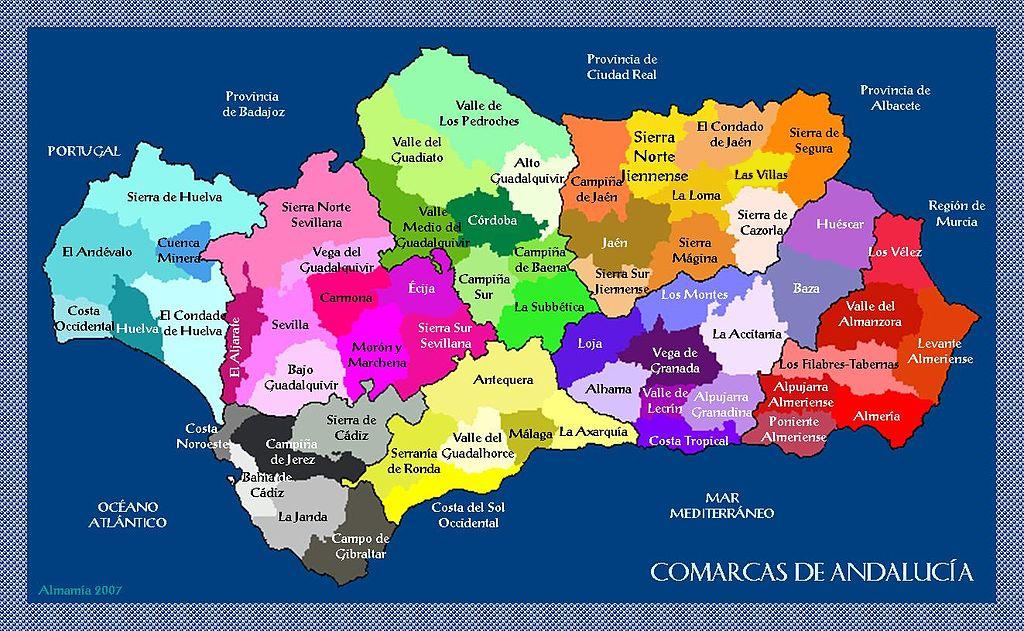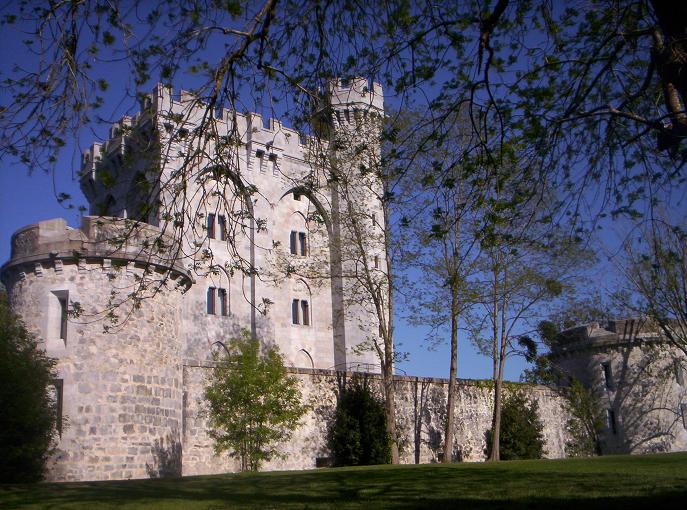|
Gautegiz Arteaga
Gautegiz Arteaga () is a town in Biscay, in the northern Spanish autonomous community of the Basque Country. It is located on the right bank of the Urdaibai estuary. Its most emblematic building is the Arteaga Tower, a medieval castle rebuilt in the 19th century for the French empress Eugénie de Montijo Eugénie de Montijo (; born María Eugenia Ignacia Agustina de Palafox y Kirkpatrick; 5 May 1826 – 11 July 1920) was Second French Empire, Empress of the French from her marriage to Napoleon III on 30 January 1853 until he was overthrown on 4 .... References External links GAUTEGIZ ARTEAGA in the Bernardo Estornés Lasa - Auñamendi Encyclopedia (Euskomedia Fundazioa) Municipalities in Biscay {{basqueCountry-geo-stub ... [...More Info...] [...Related Items...] OR: [Wikipedia] [Google] [Baidu] |
Biscay
Biscay ( ; ; ), is a province of the Basque Country (autonomous community), Basque Autonomous Community, heir of the ancient Lordship of Biscay, lying on the south shore of the Bay of Biscay, eponymous bay. The capital and largest city is Bilbao. Biscay is one of the most renowned and prosperous provinces of Spain, historically a major trading hub in the Atlantic Ocean since medieval times and, later on, one of the largest industrial and financial centers of the Iberian Peninsula. Since the extensive deindustrialization that took place throughout the 1970s, the economy has come to rely more on the Tertiary sector of the economy, services sector. Etymology It is accepted in linguistics (Koldo Mitxelena, etc.) that ''Bizkaia'' is a cognate of ''bizkar'' (cf. Biscarrosse in Aquitaine), with both place-name variants well attested in the whole Basque Country (greater region), Basque Country and out meaning 'low ridge' or 'prominence' (''Iheldo bizchaya'' attested in 1141 for the Mo ... [...More Info...] [...Related Items...] OR: [Wikipedia] [Google] [Baidu] |
Autonomous Communities Of Spain
The autonomous communities () are the first-level political divisions of Spain, administrative divisions of Spain, created in accordance with the Constitution of Spain, Spanish Constitution of 1978, with the aim of guaranteeing limited autonomy to the nationalities and regions of Spain, nationalities and regions that make up Spain. There are 17 autonomous communities and two autonomous cities (Ceuta and Melilla) that are collectively known as "autonomies". The two autonomous cities have the right to become autonomous communities. The autonomous communities exercise their right to self-government within the limits set forth in the constitution and Organic Law (Spain), organic laws known as Statute of Autonomy, Statutes of Autonomy, which broadly define the powers that they assume. Each statute sets out the devolved powers () for each community; typically those communities with stronger local nationalism have more powers, and this type of devolution has been called ''asymmetric ... [...More Info...] [...Related Items...] OR: [Wikipedia] [Google] [Baidu] |
Provinces Of Spain
A province in Spain * , ; grammatical number, sing. ''provincia'') * Basque language, Basque (, grammatical number, sing. ''probintzia''. * Catalan language, Catalan (), grammatical number, sing. ''província''. * Galician language, Galician (), grammatical number, sing. ''provincia''. is a political divisions of Spain, territorial division defined as a collection of municipalities of Spain, municipalities. The current provinces of Spain correspond by and large to the provinces created under the purview of the 1833 territorial division of Spain, 1833 territorial re-organization of Spain, with a similar predecessor from 1822 territorial division of Spain, 1822 (during the Trienio Liberal) and an earlier precedent in the 1810 Napoleonic division of Spain into 84 prefectures. There are many other groupings of municipalities that comprise the local government in Spain, local government of Spain. The boundaries of provinces can only be altered by the Spanish Parliament, giving ri ... [...More Info...] [...Related Items...] OR: [Wikipedia] [Google] [Baidu] |
Comarcas Of Spain
In Spain, a ''comarca'' () is either a traditional territorial division without any formal basis, or a group of municipalities of Spain, municipalities, legally defined by an autonomous communities of Spain, autonomous community for the purpose of providing common local government in Spain, local government services. In English, a comarca is equivalent to an area, county, district, or region, zone. Legally defined comarcas The large majority of legally defined comarcas are in comarques of Catalonia, Catalonia (42) and Comarcas of Aragon, Aragon (33), and are regulated by law and are governed by a comarcal council with specified powers. There are seven comarcas formally registered in Comarcas of the Basque Country, Basque Country and one, El Bierzo, in Castile and León. In Comarcas_of_Andalusia, Andalusia, Comarcas of Galicia, Galicia, Comarques of the Valencian Community, Valencia and Comarcas of Asturias, Asturias, comarcas are defined by regional law but lack any specific ... [...More Info...] [...Related Items...] OR: [Wikipedia] [Google] [Baidu] |
Busturialdea
Busturialdea, also named ''Busturialde - Urdaibai'' is a comarca of the province of Biscay, in the Basque Country, Spain. It is the heir of "Busturia", one of the original '' merindades'' that used to compose the province of Biscay – this should not be confused with Busturia, a municipality located in this region. Busturialdea is a diminished portion of the same original subregion and has two capital cities; Bermeo and Gernika-Lumo. It is one of the seven ''comarcas'' that compose the province of Biscay. History Busturia used to be one of the ''merindades'' of Biscay and included a larger territory than the current one of Busturialdea, as it reached the province of Gipuzkoa. Busturialdea was historically the core of Biscay: the capitals of the province, Bermeo and Gernika, were located in it; the village of Mundaka, also belonging to this region, had the privilege of speaking always first in the sessions of its parliament and for some time, the harbour of Bermeo was t ... [...More Info...] [...Related Items...] OR: [Wikipedia] [Google] [Baidu] |
Spain
Spain, or the Kingdom of Spain, is a country in Southern Europe, Southern and Western Europe with territories in North Africa. Featuring the Punta de Tarifa, southernmost point of continental Europe, it is the largest country in Southern Europe and the fourth-most populous European Union member state. Spanning across the majority of the Iberian Peninsula, its territory also includes the Canary Islands, in the Eastern Atlantic Ocean, the Balearic Islands, in the Western Mediterranean Sea, and the Autonomous communities of Spain#Autonomous cities, autonomous cities of Ceuta and Melilla, in mainland Africa. Peninsular Spain is bordered to the north by France, Andorra, and the Bay of Biscay; to the east and south by the Mediterranean Sea and Gibraltar; and to the west by Portugal and the Atlantic Ocean. Spain's capital and List of largest cities in Spain, largest city is Madrid, and other major List of metropolitan areas in Spain, urban areas include Barcelona, Valencia, Seville, ... [...More Info...] [...Related Items...] OR: [Wikipedia] [Google] [Baidu] |
Autonomous Community
The autonomous communities () are the first-level administrative divisions of Spain, created in accordance with the Spanish Constitution of 1978, with the aim of guaranteeing limited autonomy to the nationalities and regions that make up Spain. There are 17 autonomous communities and two autonomous cities (Ceuta and Melilla) that are collectively known as "autonomies". The two autonomous cities have the right to become autonomous communities. The autonomous communities exercise their right to self-government within the limits set forth in the constitution and organic laws known as Statutes of Autonomy, which broadly define the powers that they assume. Each statute sets out the devolved powers () for each community; typically those communities with stronger local nationalism have more powers, and this type of devolution has been called ''asymmetrical'' which is on the whole seen as advantageous, able to respond to diversity. Despite the Constitution not setting a mandat ... [...More Info...] [...Related Items...] OR: [Wikipedia] [Google] [Baidu] |
Basque Country (autonomous Community)
The Basque Country or Basque Autonomous Community (), also officially called Euskadi (), is an Autonomous communities of Spain, autonomous community in northern Spain. It includes the Basque provinces of Álava, Araba, Biscay, Bizkaia, and Gipuzkoa. It surrounds two enclaves called Treviño enclave, Treviño (Province of Burgos, Burgos) and Valle de Villaverde (Cantabria). The Basque Country was granted the status of ''Nationalities and regions of Spain, nationality'', attributed by the Spanish Constitution of 1978. The autonomous community is based on the Statute of Autonomy of the Basque Country, a foundational legal document providing the framework for the development of the Basque people on Southern Basque Country. Parallelly, Navarre, which narrowly rejected a joint statute of autonomy in 1932, was granted a separate chartered statute in 1982. Currently there is no official capital in the autonomous community, but the city of Vitoria-Gasteiz, in the province of Álava, is ... [...More Info...] [...Related Items...] OR: [Wikipedia] [Google] [Baidu] |
Urdaibai
The Urdaibai estuary is a natural region and a Biosphere Reserve of Biscay, Basque Country, Spain. It is also referred as Mundaka or Gernika estuary. Urdaibai is located on the Bay of Biscay coast, in the north of the Iberian Peninsula. Urdaibai covers an area of with some 45,000 inhabitants, most of them concentrated in the towns of Bermeo and Gernika. The territory is characterized by a hydrographic basin of small streams that merge in a great salt marsh surrounded by high sheer cliffs. The surrounding countryside is occupied by meadowland, oak groves, leafy woods and specially by plantations of fast-growing conifers (Pinus radiata). The coastal landscape is covered with Cantabrian woods of Holm Oak and Strawberry Trees. In Urdaibai have been described 615 species of vascular plants and 318 species of vertebrates, 245 of which are birds. The area contains remnants of the Prehistoric, Roman and the Middle Ages. Particularly notable is the Santimamiñe cave, which has y ... [...More Info...] [...Related Items...] OR: [Wikipedia] [Google] [Baidu] |
Arteaga Tower
The Castillo de la Emperatriz Eugenia de Montijo () is a neo-Gothic castle in the village of Arteaga, near Bilbao in the Basque Country of Spain. It is designated a Basque Heritage building. Location The castle is located in a fertile part of the Urdaibai estuary, not far from the historic town of Guernica. Unlike Spanish castles built for defense, it is not in an elevated position but on a plain or meadow, surrounded by trees and other vegetation. In this respect it resembles Fontainebleau Castle and other French royal residences. History The original manor house was said to have been built in the eighth century by Fortún Ortúnez and Sancho Gaúteguiz, and was destroyed and rebuilt many times. The castle was built on the foundations of a tower mentioned in writings from the mid-fifteenth century. By the nineteenth century it was very run down, having been used as a farmhouse. The tower was owned by the Arteaga family, who were related to the Montijo family and thus to the E ... [...More Info...] [...Related Items...] OR: [Wikipedia] [Google] [Baidu] |
Eugénie De Montijo
Eugénie de Montijo (; born María Eugenia Ignacia Agustina de Palafox y Kirkpatrick; 5 May 1826 – 11 July 1920) was Second French Empire, Empress of the French from her marriage to Napoleon III on 30 January 1853 until he was overthrown on 4 September 1870. From 28 July to 4 September 1870, she was the ''de facto'' head of state of France. Born to prominent Spanish nobility, Eugénie was educated in France, Spain, and England. As Empress, she used her influence to champion "authoritarian and clerical policies"; her involvement in politics earned her much criticism from contemporaries.McQueen 2011, p. 3. Napoléon and Eugénie had one child together, Louis-Napoléon, Prince Imperial (1856–1879). After the fall of the Empire, the three lived in exile in England; Eugénie outlived both her husband and son and spent the remainder of her life working to commemorate their memories and the memory of the Second French Empire. Youth María Eugenia Ignacia Agustina was born on 5 Ma ... [...More Info...] [...Related Items...] OR: [Wikipedia] [Google] [Baidu] |
Arteaga Tower Small , town in Biscay province of Spain
{{disambiguation, geo ...
Arteaga may refer to: *Arteaga, Coahuila, city in Mexico *Arteaga Municipality, Michoacán, city in Mexico *Arteaga (surname) *Arteaga (footballer, born 1969), Spanish footballer See also *Gautegiz Arteaga Gautegiz Arteaga () is a town in Biscay, in the northern Spanish autonomous community of the Basque Country. It is located on the right bank of the Urdaibai estuary. Its most emblematic building is the Arteaga Tower, a medieval castle rebuilt ... [...More Info...] [...Related Items...] OR: [Wikipedia] [Google] [Baidu] |







